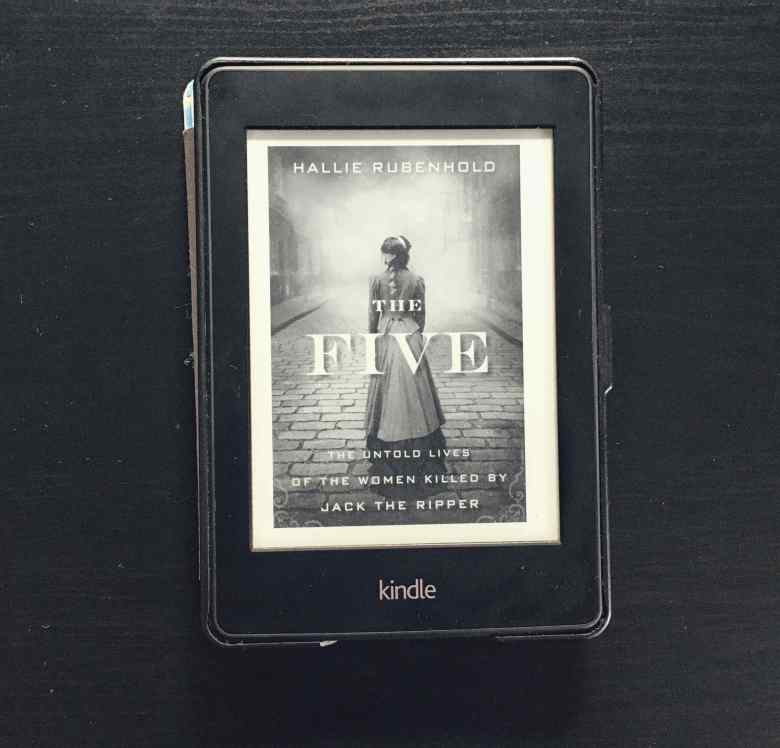
The fibers that have clung to and defined the shape of Polly, Annie, Elisabeth, Kate, and Mary Jane’s stories are the values of the Victorian world. They are male, authoritarian, and middle class. They were formed at a time when women had no voice, and few rights, and the poor were considered lazy and degenerate: to have been both of these things was one of the worst possible combinations.
I regularly oscillate between fiction and non-fiction. I love both, though not necessarily at the same time. Maybe it’s the difference in pace, style, and nature, maybe it’s because a non-fiction text feels different to me than a fiction text (as nerdy as this sounds). Whatever it is, right now I’m in a non-fiction phase. Enter Hallie Rubenhold’s The Five.
The Story of Jack the Ripper’s crimes…again?
I’m a proper true crime buff, though most of the time I listen to true crime podcasts. I rarely read true crime books, and I’m also not especially interested in Jack the Ripper. Heard that, seen this, read From Hell — thanks. But Rubenhold’s The Five has been all over bookstagram for months, with everyone being absolutely thrilled. Experiencing a sort of FOMO, I had to find out for myself.
Rubenhold tells the stories of Jack’s victims, the canonical five: Mary Ann “Polly” Nichols, Annie Chapman, Elizabeth Stride, Catherine Eddowes, and Mary Jane Kelly. In doing so, she sets the scene for each woman, from birth to her gruesome demise, though she leaves the actual murder out, putting an even stronger focus on the victim’s story and not that of her killing (and killer).
Reading and learning about Polly, Annie, Liz, Kate, and Mary Jane reads like an intriguing historical tale that turns into a crime story only at the end. Emphasizing the fact that only two out of the five women were prostitutes — the others were rough sleepers, drunks, and poor, with no steady income and place to call home — the author refutes a tragic misconception conveyed by the press that was never contradicted by police and authorities. Because they didn’t care. A woman of a certain age without a husband, a family, a place to call home, or money was worth nothing. Calling her a prostitute only made for a better story.
The courses their lives took mirrored that of so many other women of the Victorian age, and yet were so singular in the way they ended. It is for them that I write this book. I do so in the hope that we may now hear their stories clearly and give back to them that which was so brutally taken away with their lives: their dignity.
In putting the focus on the victims, Hallie Rubenhold also leaves out most of the developments regarding the manhunt of Jack the Ripper in her retelling of the women’s lives. This makes the book refreshingly interesting for someone like me who doesn’t care about another Ripper debate. I’ll probably never know who killed these women. But thanks to Rubenhold, I had ample chance to find out something about the women themselves.
Conclusion
I felt pleasantly surprised (if one should say so regarding a true crime book) by how much I liked the book. I read Kate Summerscale’s The Suspicions of Mr. Whicher a few years ago and really like it. Since then, I’ve been looking for a worthy successor. I’ve found it in Hallie Rubenhold’s The Five and I’ll definitely read her other books. Also, if you know any great true crime stories from this period, let me know in the comments — thanks! 🙂
